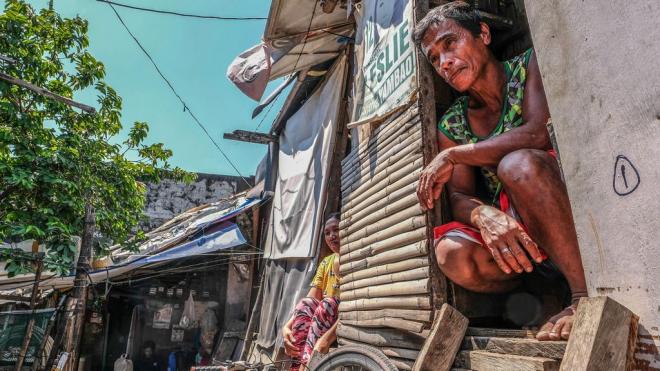
The coronavirus disease (COVID-19) pandemic has hit the poor the hardest, pushing millions further into poverty.
In the Philippines, as in many developing economies, the adverse effects of COVID-19, particularly disruptions in business and livelihood, threaten to reverse hard-won progress in poverty reduction. Estimates of the Asian Development Bank (ADB) show that unless immediate action is taken, the poverty rate would increase to 20.7% in 2020 from 16.6% in 2018, which would mean 5.5 million more Filipinos would become poor.
A case study examines how the Government of the Philippines implemented an ambitious program of delivering cash assistance to 18 million households, or about 90 million individuals, over a period of 9 months in 2020 in response to the pandemic. It explores the implementation challenges, successes, and lessons learned from a nationwide shock-responsive social protection intervention.
The case study was written by Camilo Gudmalin, former undersecretary of the Department of Social Welfare and Development (DSWD); Lizan Perante-Calina, dean of the Development Academy of the Philippines; and three ADB staff from the Southeast Asia Department: Joven Balbosa (advisor), Joel Mangahas (principal country specialist), and Maria Aloha Samoza (senior project officer). It was prepared under a workshop of the ADB Institute.
The Philippines’ Social Amelioration Program (SAP) sought to cover 82% of the country’s population, including senior citizens, persons with disabilities, pregnant women, solo parents, distressed overseas Filipino workers, indigenous people, the homeless, farmers, fisherfolk, the self-employed, and informal settlers. The program was able to reach 98% of the target households by the end of November after overcoming several hurdles. Cash grants ranged from ₱5,000 ($98) to ₱8,000 ($157) per month for 2 months.
Challenges included the “huge program scope, different databases for identifying beneficiaries, health and security risks to implementors, mobility restrictions, communication and coordination constraints, and heightened administrative burden stemming from monitoring, reporting, and audit requirements on fund disbursements.” The study notes that five important factors in addressing these obstacles: a legal mandate for the program, beneficiary targeting system, institutional coordination, monitoring and feedback, and cooperation and partnerships.
The Bayanihan Law was passed on 24 March 2020 to implement the program, expand and enhance the existing Pantawid Pamilyang Pilipino Program (4Ps), and gave the DSWD the lead in carrying out SAP in collaboration with local governments.
An interagency task force, which planned, coordinated, and implemented responses to the pandemic, created a working group to monitor and ensure the program’s target outcomes are met. The government also worked with the private sector, development partners, civil society, and business groups.
The SAP experience showed that a reliable database for targeting beneficiaries of social assistance was vital to the success of the program. Before COVID-19, the DSWD was delivering cash transfers through 4Ps and was using a targeting system, but the scope of SAP and the pandemic situation were beyond its experience.
The government identified beneficiaries by tapping existing databases, such as social registries, pension data, affluence indicators (e.g., tax, vehicle, real property), and nongovernment data from telecom providers, nongovernmental organizations, humanitarian data, etc. It also asked people to register for the program through the internet, SMS, and helplines.
The case study identifies several lessons from the program. These include using the community-based monitoring system of local government units to identify their poor and vulnerable population groups to complement the 4Ps database. Financial service providers, including those that offer mobile banking, should also have been commissioned at the start of the program to avoid health and security risks associated with physically delivering the cash assistance to beneficiaries.
The story was first published by BIMP-EAGA on 4 October 2021.

